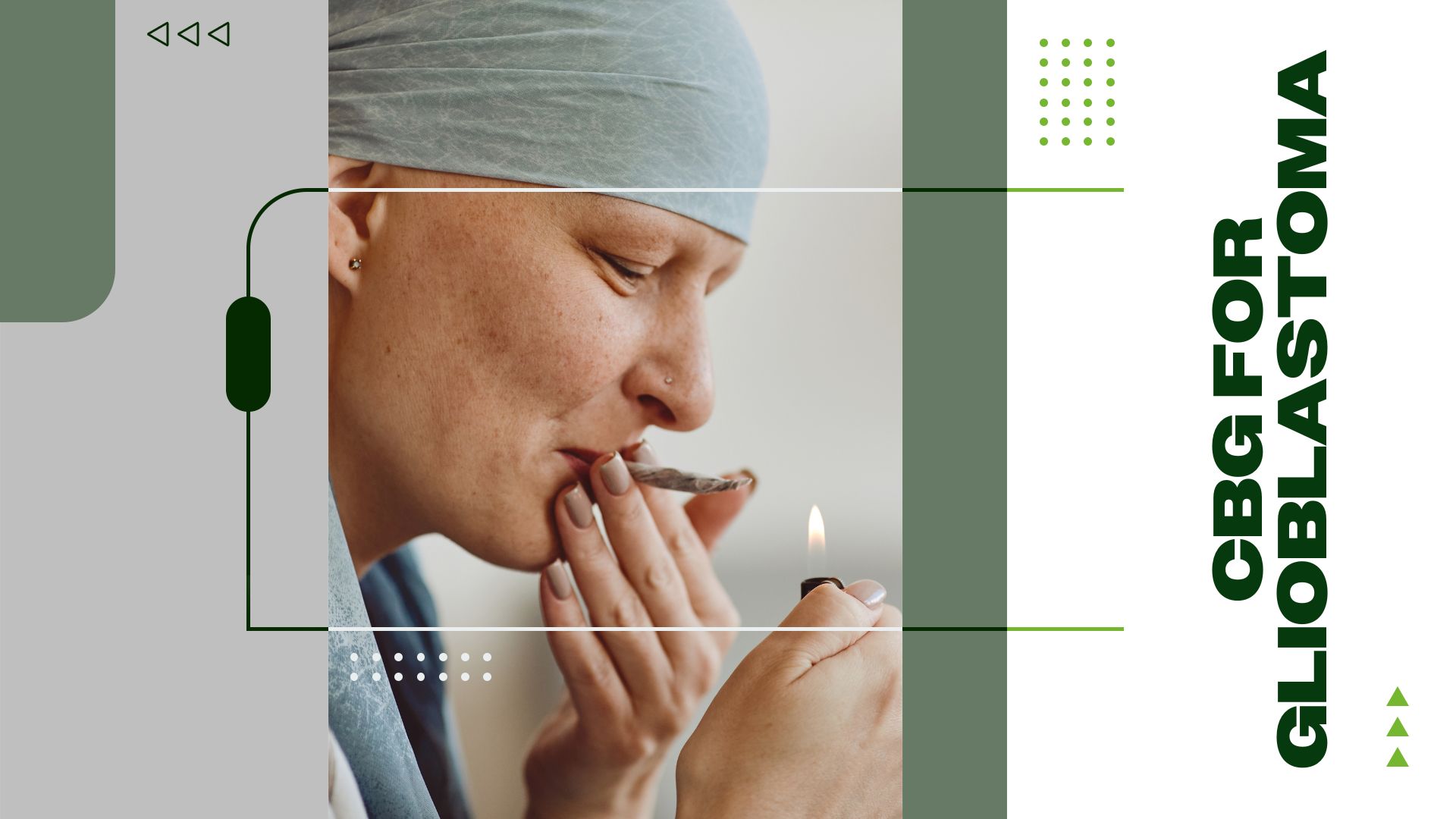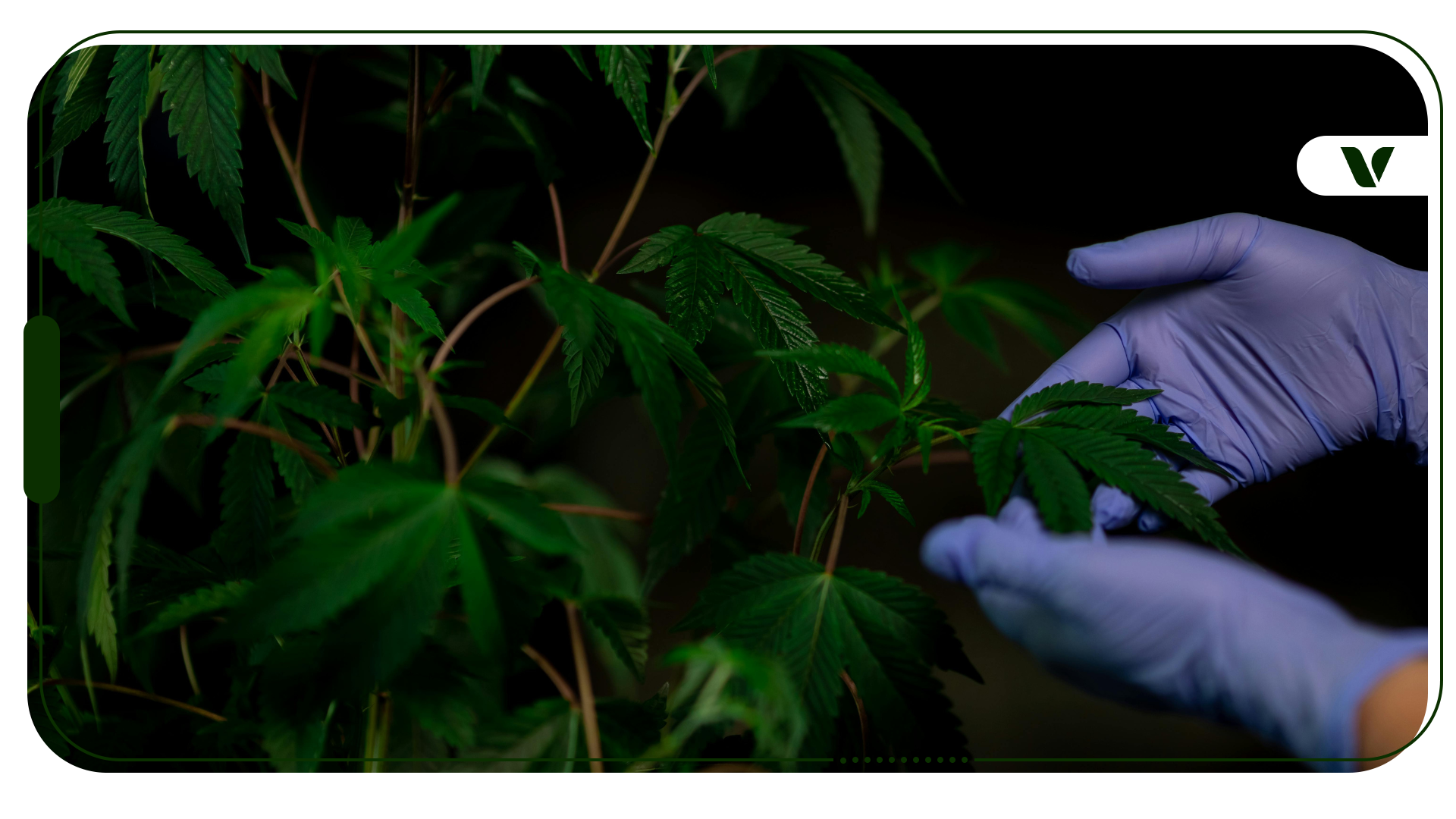Cannabis has long been used to aid with the treatment of cancer due to its ability to reduce nausea, reduce inflammation, stimulate appetite and reduce pain while promoting homeostasis in the body. Many forms of cancer are aggressive, but glioblastoma is said to be especially so. Glioblastoma is not often caught early as the initial symptoms are non-specific and include headaches, nausea, and personality deviation. Much of glioblastoma is still unknown but the typical survival duration after diagnosis is between 12 to 15 months. Fortunately, a group of trailblazers has found a way to impede (delay or prevent) cell growth in Glioblastoma patients. The team found that a cannabinoid known as CBG is the key to impeding the growth of glioblastoma cells, in turn extending life expectancy and reducing the effects of the condition.
What is CBG?
CBG, or Cannabigerol, is a cannabinoid compound from the cannabis plant. The cannabinoid can be located amongst other cannabinoids such as Tetrahydrocannabinol (THC) and Cannabidiol (CBD), which are more commonly known. What many people do not know is that THC and CBD have somewhat of a mother cannabinoid, which is CBG. This mother-like cannabinoid produces an acid, CBGA (cannabigerolic acid), which acts as a precursor to THCA (tetrahydrocannabinolic acid), CBDA (cannabidiolic acid), and CBCA (cannabichromenic acid). The CBGA is broken down by enzymes and is sent throughout the plant to the other acids. Once these are exposed to heat or ultraviolet light, they come to the cannabis we know and love THC, CBD, and CBC (Cannabichromene).
CBG has been found to act as a vasodilator and appears to have neuroprotective effects, anti-inflammatory properties as well as many of the health benefits found in other cannabinoids such as THC and CBD. Which makes sense when considering that this compound is “the mother” to cannabinoids. However, this cannabinoid is far less understood in comparison to infamous cannabinoids CBD and THC.
What is Glioblastoma?
Glioblastoma is one of the most aggressive forms of cancer and usually occurs in the brain and spinal cord. Glioblastoma is also known as glioblastoma multiforme and is caused by cells called astrocytes. Most of the time, a cure is not possible and treatment is only used to slow progression as well as to reduce signs and symptoms. Astrocytes are star-shaped cells, which are a type of neuroglia found in the nervous system of invertebrates and vertebrates. Astrocytes are categorized into fibrous astrocytes and protoplasmic astrocytes. The astrocytes are supportive of the nervous system and are responsible for communication between the brain and spinal to the rest of the body parts.
Glioblastoma can therefore be a brain or spinal cancer and is said to have a complex biology, despite decades of dedicated research on the matter. This form of cancer is “characterized by a rapid and highly infiltrative” growth rate. Fortunately, professionals have successfully formulated a novel cannabinoid to act as a treatment for glioblastoma, driven by the goal of finding a cure which then changed to the aims of subduing tumor malignancy, turning cancer into a chronic disease with longer life expectancy” and a better outlook on the quality of life.
Why You Should Get Your Medical Marijuana Card
Veriheal has satisfied millions of patients nationwide by giving them access to these benefits
- Larger purchase limits
- Peace of mind
- Enhanced legal protection
- Access to higher potency strains
- Save up to 25% on cannabis purchases
- Skip the line at the dispensary
How CBG Intercepts Glioblastoma Cell Growth
MGC Pharmaceuticals, the Slovenian National Institute of Biology (NIB), and the Neurosurgery Department at the University Medical Centre in Ljubljana (Slovenia) teamed up in efforts to research and collaborate on a treatment for glioblastoma. Earlier in 2020, the collaboration confirmed that they had successful research results on their cannabinoid formation, which was developed with the treatment of glioblastoma in mind.
Since glioblastoma is one of the most malignant cancer types and considering the low survival rates, finding an effective treatment has never been more necessary. The team of researchers explained that within the cannabis plant, there are several phytochemicals (chemical compounds from plants) that possess important properties for fighting against glioblastoma, including the compounds THC and CBD. The team explains that these cannabis phytochemicals are able to “bind to specific transmembrane proteins”, which then “facilitate entrance into the glioblastoma cells”. By entering the glioblastoma cells, cannabis is interfering with its biochemical pathway, promotes the cancerous cells’ growth arrest- which means that the growth of the glioblastoma cells will not function properly, inhibit their invasion, or in other words, stopping its spread and causing cell death in glioblastoma.
The aim of the team was to develop an effective cannabinoid combination and define the protocols for treating glioblastoma patients. While the study assessed mainly THC, CBD, and CBC, the results of their efforts revealed that CBG is the key. Cannabigerol, or CBG, is a non-intoxicating compound. When the team combined the CBD with the key, CBG, they found that the cytotoxicity (toxicity to glioblastoma cells) doubled. The team explains that this doubled toxicity to the glioblastoma cells can be explained by CBD’s ability to inhibit cancer cell viability, while CBG cascades the biological process which leads to “programmed death (apoptosis) of GSCs (glioblastoma stem cells)”.
This study’s results were concluded by stating that “The effective power of CBG and CBD to terminate cancer stem cells is completely novel. The ability of this formulation to affect GSCs in vivo, without the need for THC, would enable the development of a therapeutic intervention which is devoid of its psychotropic effects”. The next steps for this team will be to focus on testing the delivery systems with the aim to cross the blood-brain barrier (the BBB).
The fact that CBG is the key to be added to CBD for making cannabis a cancer cell killing compound is quite revolutionary as cannabis is a botanical substance, with far less severe side effects when compared to its man-made counterpart treatments including brutal chemotherapy. It is our hope that research like this continues to surface so that future generations can live in a world where cancer fears cannabis and where people don’t fear cancer.
Author, Share & Comments









